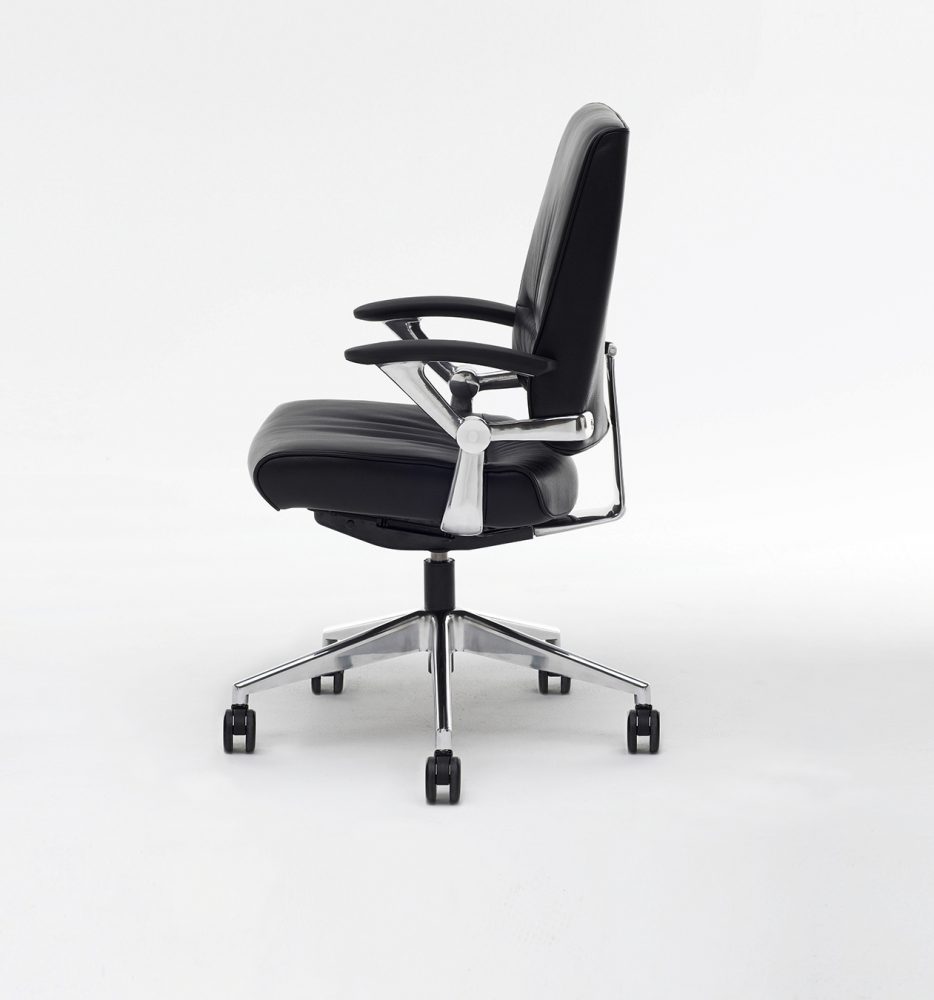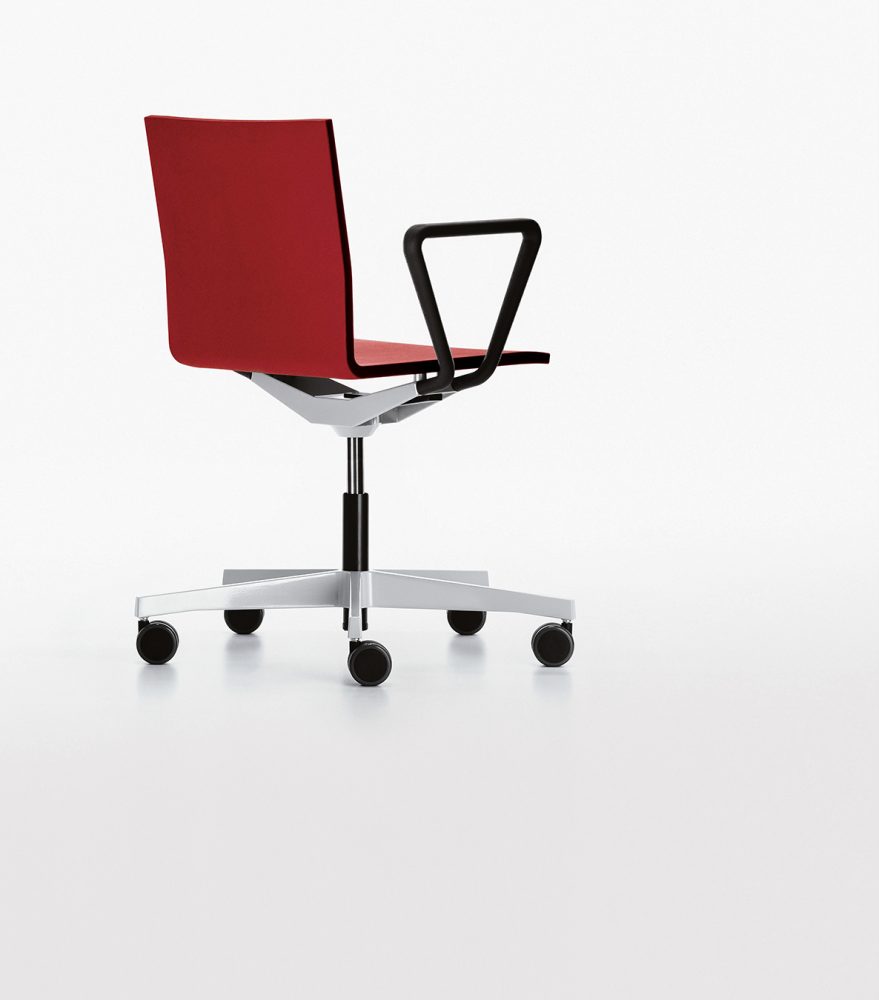If you’ve ever wondered what makes the perfect office chair, it is perhaps an indication that you are not sitting in it. A perfect office chair should really warrant no thought at all. It should foster a work environment so comfortable that using it should seem second nature. Yet there is so much to say about office chairs, that simply sitting pretty seems a mistake.
The first consideration that comes to mind is ergonomics. Almost a decade ago Herman-Miller introduced a chair that many believed to be perfect; the Aeron. The attention to ergonomics Herman-Miller invested in the Aeron was unprecedented, and its honest design kept nothing hidden. Forget aesthetics, one look at its skeletal frame and you know its only concern is physical comfort. The Aeron’s protruding knobs and levers allow for modification in just about every capacity, but perhaps this attribute is also its drawback. In today’s work world, most people have neither the time nor the patience to figure out how to manually adjust their chairs to achieve the ideal support.
Nevertheless, the Aeron is still a best-seller at Inform Interiors in Gastown. But as Inform’s Paul Sjaarda explains, new office chairs, such as those produced by the Swiss company Vitra, have ergonomic ability intelligently built into the internal structure and external shell of the chair. As such, they achieve the ideal support with few manual adjustments. Vitra’s .04 chair demonstrates the true sophistication of their designs. Leaf-springs built into its backrest are controlled by the weight of your body, allowing for smooth transitions into the reclining position. Meanwhile, the .04’s flexible moulded foam shell adapts to the body’s contours to relieve pressure points. And, the outward appearance of the .04 is so simple and unassuming that its clean straight lines only reveal their comfort when sat upon.
Ultimately, today’s perfect office chair should move as you move, responding to the ebb and flow of your workday. Interior Designer Ian Dubienski at Group 5 Design says, “The perfect chair should meet many needs. It should respond to your every unconscious decision, kind of like a second skin!” And once you have found the right fit, you may never want to give it up.
Klaus Nienkamper, the founder of Nienkamper Furniture agrees. He once received a call from a client’s executive assistant, who was inquiring about a chair that had been with the business for ages. “I need to get this chair fixed!” she said. “It saw the company through all its luck and success. If you get rid of it, I’ll get fired!”
“People have an intimate relationship with their chairs,” Carol Jones, Principal at Kasian, adds. “No other item of office furnishing comes close to the level of constant physical contact that a chair does.” So if the old adage is true, and actions do indeed speak louder than words, then the perfect office chair is a master of body language. Leaning back to laugh, or to think, office chairs can communicate what we are feeling throughout the day. Acting as an extension of the self, a versatile and comfortable office chair can also express our emotional comfort.
While physical comfort is crucial, overall emotional comfort is influenced by many factors. Aware of this, the new generation of office chairs today factor aesthetics into the equation. As Mr. Nienkamper says, “No one wants to feel like a sitting machine. People like chairs that make a statement!” So, an organization should consider how they want their employees and clients to feel about the business they are engaging in. Every company has a unique story to tell about how they do business, and a provocative interior design can certainly enhance the physical presence of a brand. But interior design is only as meaningful as the emotional atmosphere it fosters. Thus, the office chair is the single most important furnishing a company can invest in. Through its inherent relationship to human nature, the perfect office chair, once found, can bring an organization, and good work habits, to life.











